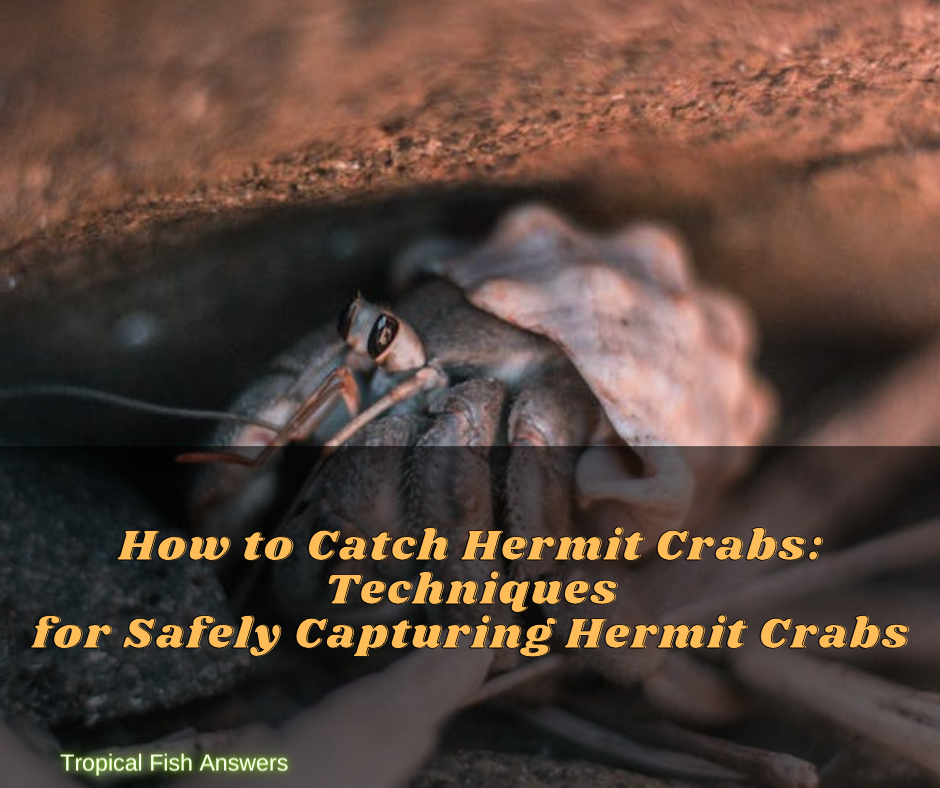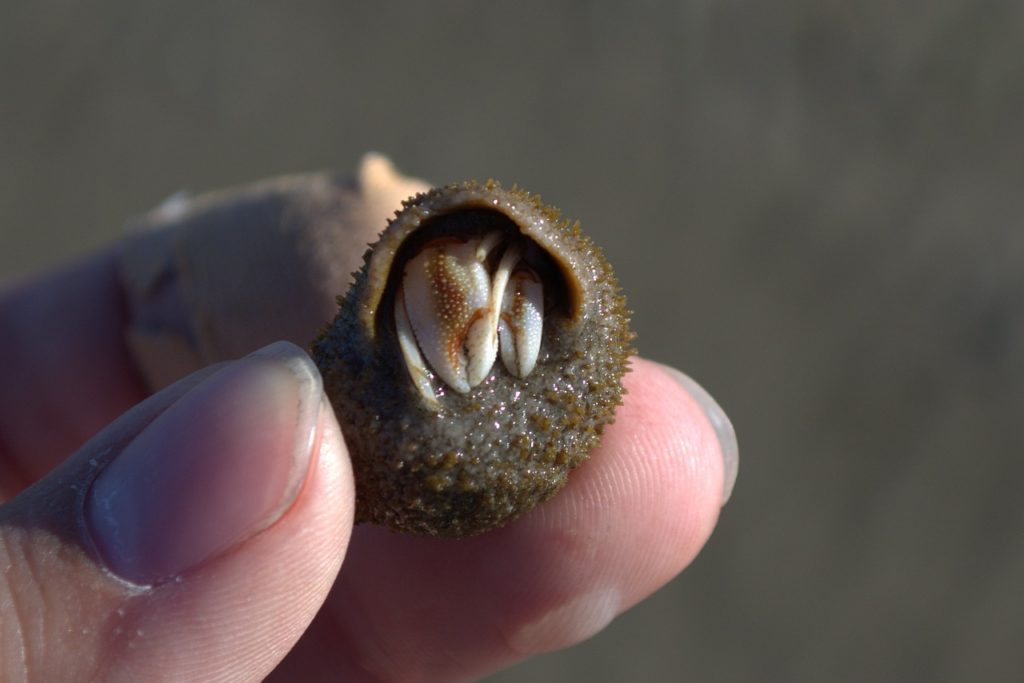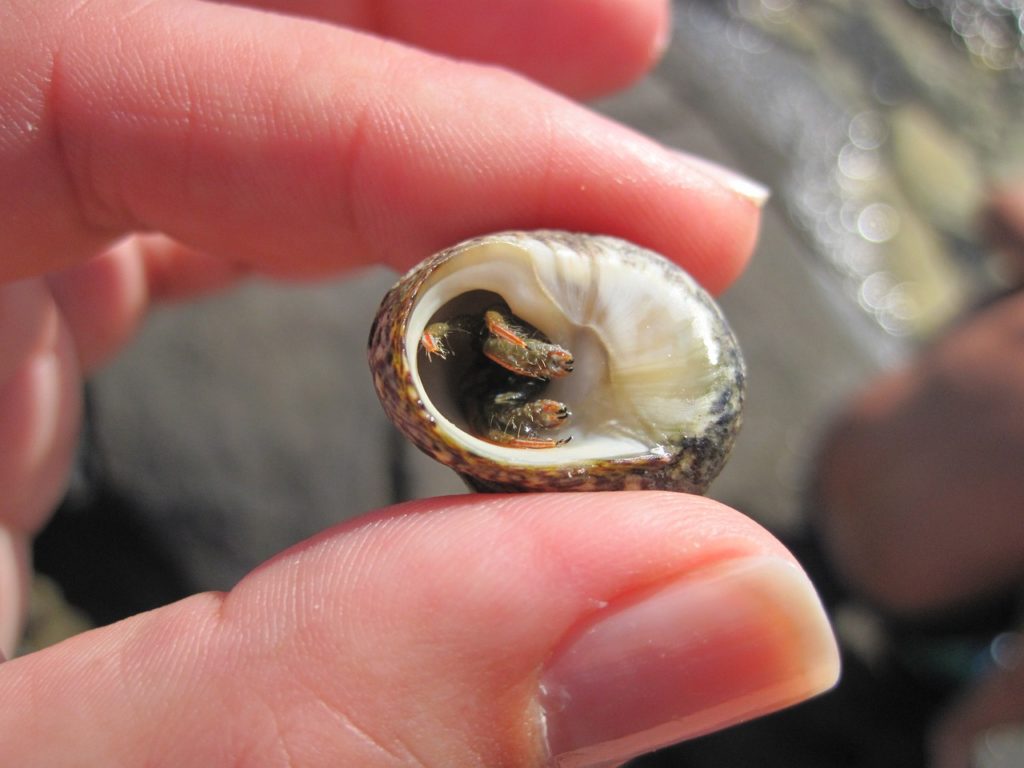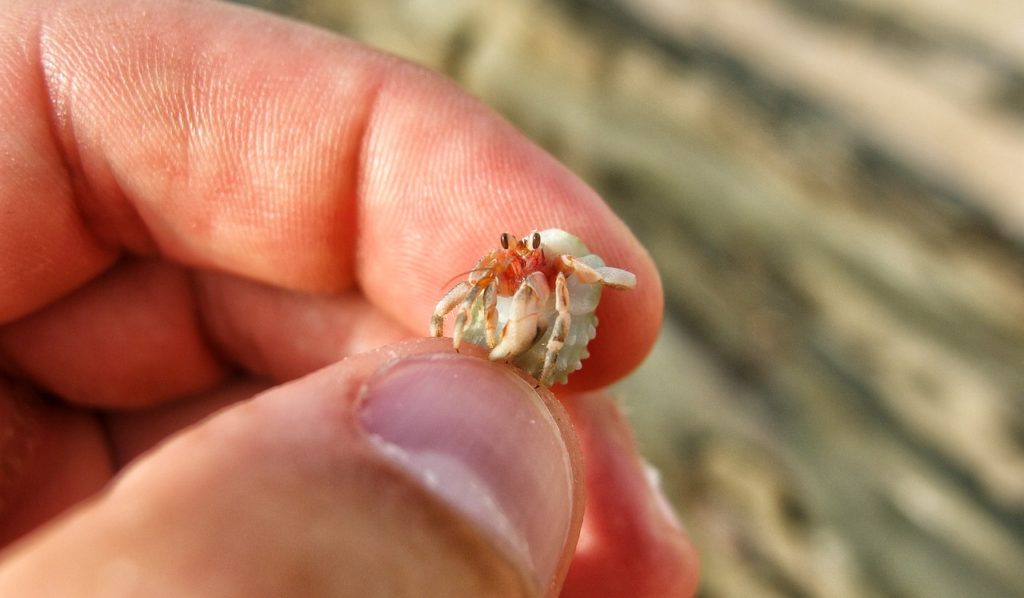Introduction to How to Catch Hermit Crabs
Hermit Crabs: A Fascinating Ocean Creature
Hermit crabs, also known as “hermies” are unique and captivating creatures that have become popular pets among people of all ages. While they are not traditional pets, hermit crabs have gained a significant following due to their interesting behavior and charming personalities.
Importance of Safely Capturing Hermit Crabs
When it comes to handling hermit crabs, it is crucial to exercise caution and ensure their safety. Unlike other pets, hermit crabs require a delicate touch and specific handling techniques to prevent any harm to both the crab and the handler. Here are some essential considerations when interacting with hermit crabs:
- Proper Handling Techniques:
- It is important to avoid holding hermit crabs by their shells, as they have the ability to reach around and pinch your fingers.
- Instead, gently scoop them up from the sides or use a soft cloth to avoid direct contact with their pincers.
- Knowledge of Different Hermit Crab Types:
- Hermit crabs come in various species, each with its own characteristics and requirements.
- Understanding these differences can help owners provide the best care and create suitable environments for their hermit crab pets.
- Exploring Hermit Crab Anatomy:
- Familiarizing yourself with the anatomy of hermit crabs can enhance your understanding of their physical features and behaviors.
- Learning about their exoskeleton, appendages, and respiratory system can help you ensure their well-being and identify any signs of illness or discomfort.
In summary, hermit crabs are fascinating creatures that require proper handling techniques and understanding of their unique needs. By following the guidelines outlined above, potential hermit crab owners can create a safe and enriching environment for their beloved pets.
Understanding Hermit Crab Behavior
Hermit Crab Habits and Habitats
Hermit crabs are fascinating creatures with unique behaviors and habitats. They are primarily found in coastal regions and have a preference for sandy areas. These nocturnal creatures are known for their scavenging habits and their ability to adapt to different environments. Hermit crabs are social animals and are often found in groups, creating a sense of community within their habitats.
Factors to Consider Before Attempting to Catch Hermit Crabs
Before attempting to catch hermit crabs, there are several factors to consider:
- Environmental Impact: Taking hermit crabs from their natural habitats can have a negative impact on the ecosystem. It is important to be mindful of the potential consequences and seek alternative sources for obtaining hermit crabs, such as breeders or pet stores.
- Education and Research: Prior to catching hermit crabs, it is important to educate yourself about their needs, behaviors, and proper care. Researching their preferred habitat, diet, and other necessary requirements will help ensure the well-being of the captured crabs.
- Handling Techniques: As mentioned earlier, hermit crabs have pinchers and can cause injury if not handled properly. It is essential to learn and practice gentle handling techniques to avoid harming the crabs or yourself.
- Creating a Suitable Environment: Hermit crabs require a suitable habitat with proper temperature, humidity, and substrate. It is important to set up an enclosure that mimics their natural environment to promote their health and well-being.
By considering these factors and taking appropriate measures, you can ensure the successful capture and care of hermit crabs while also minimizing the negative impact on their natural habitats. Remember, responsible ownership and ethical practices are crucial for the well-being of these captivating creatures.
Essential Equipment for Catching Hermit Crabs
Crab Pot and Dip Net: Must-Have Tools
To successfully catch hermit crabs, you will need the following essential equipment:
- Crab Pot: A crab pot is a cylindrical wire cage that is used to trap crabs. Make sure to choose a pot that is large enough to accommodate the size of the crabs you intend to catch.
- Dip Net: A dip net, also known as a scrap net, is used to scoop up crabs that may escape from the pot. It is important to have a dip net with a sturdy handle and a wide net opening to ensure easy capture.
Additional Equipment for a Successful Capture
In addition to the crab pot and dip net, the following equipment can enhance your chances of a successful hermit crab capture:
- Crabbing Gloves: These gloves provide protection for your hands when handling hermit crabs. They have a textured surface for a better grip and prevent the crabs from pinching your fingers.
- Culling Stick: A culling stick is a long tool with a blunt end that can be used to gently coax hermit crabs out of their shells. This is especially useful when you need to examine or measure the captured crabs.
- Container: A container with a lid is necessary to store the captured hermit crabs. Make sure the container has enough space and provides proper ventilation for the crabs.
- Bait: To attract the hermit crabs into the pot, use bait such as chicken necks or frozen fish. Place the bait inside the pot to entice the crabs to enter.
Remember to always consider the environmental impact when catching hermit crabs. Taking them from their natural habitats can have negative consequences. It is important to educate yourself about their needs and proper care before attempting to catch them.
Creating a suitable environment that mimics their natural habitat is essential for their well-being. By following these guidelines and using the appropriate equipment, you can successfully catch hermit crabs while minimizing any harm to their habitats.
Preparing for the Catch
Choosing the Right Bait
To lure hermit crabs into your trap, it is essential to select the right bait. Some popular options include chicken necks, frozen fish, or even raw shrimp. The strong scent of these baits will attract the crabs and entice them to enter the crab pot.
Selecting an Ideal Location for Hermit Crab Capture
Finding the right location to set up your crab pot is crucial for a successful catch. Here are some tips to help you select an ideal spot:
- Observe the Tides: Hermit crabs are most active during high tide, so plan your capture accordingly. Look for areas where the water level rises close to the shoreline.
- Rocky or Sandy Areas: Hermit crabs tend to seek refuge in rocky or sandy areas, as they provide ample hiding spots. Look for these types of habitats along the shoreline.
- Shallow Waters: Hermit crabs prefer shallow waters where they can easily scavenge for food. Look for areas where the water is knee-deep or shallower.
- Avoid Disturbed Areas: Stay away from areas with heavy boat traffic or human activity, as this can scare away the crabs. Look for quieter spots where the crabs are likely to thrive.
Once you have chosen the ideal location, place your crab pot in the water, ensuring that it is securely anchored. Make sure to position it in a way that the entrance is facing the open side of the water to allow the crabs to enter easily.
Remember, hermit crabs play an essential role in the ecosystem, so always handle them with care and release any unwanted captures back into their natural habitat. Enjoy the thrill of crabbing while respecting the environment and the well-being of these fascinating creatures.
Techniques for Catching Hermit Crabs
Using the Crab Pot Method
To successfully catch hermit crabs using the crab pot method, follow these steps:
- Prepare the crab pot: Choose a sturdy crab pot with small holes or openings that allow the crabs to enter but prevent them from escaping. Ensure that the pot is clean and free from any debris.
- Bait the pot: Select the appropriate bait such as chicken necks, frozen fish, or raw shrimp. Place the bait inside the pot, making sure it is securely attached or placed in a bait bag to prevent it from being stolen.
- Choose the right location: Find a suitable spot along the shoreline where hermit crabs are known to inhabit. Look for areas with rocky or sandy substrates, as these are preferred habitats for the crabs. Also, consider the tide and select a time when the water is at its highest level.
- Lower the pot into the water: Carefully submerge the pot into the water, ensuring that it is fully immersed. Anchor the pot securely to prevent it from drifting away with the current. Position it with the entrance facing the open side of the water to allow the crabs to easily enter.
- Wait patiently: Leave the pot in the water undisturbed for a sufficient period, typically around 30 minutes, to allow the crabs to be attracted to the bait and enter the pot.
- Retrieve the pot: Slowly and gently pull the pot out of the water, being cautious not to shake it too aggressively. Inspect the pot to see if any crabs have been caught. If successful, carefully remove the captured crabs and transfer them into a bucket or container for further usage or observation.
Employing the Dip Net Method
The dip net method is another effective way to catch hermit crabs. Follow these steps to increase your chances of a successful catch:
- Prepare the dip net: Choose a net with a long handle and a finely woven mesh that can prevent the crabs from escaping. Ensure that the net is clean and free from any knots or tears that could compromise its effectiveness.
- Look for the hermit crabs: Observe areas along the shoreline where hermit crabs are likely to be found, such as rocky or sandy patches. Look for signs of movement, including small indentations in the sand or rocks.
- Approach the crab cautiously: Slowly and quietly approach the crab you wish to catch. Extend the net over the crab, ensuring that it is positioned correctly to prevent the crab from escaping.
- Swiftly scoop the crab: With a quick, smooth motion, scoop the net under the crab and lift it out of its hiding place. Be gentle to avoid injuring the crab or damaging the net.
- Inspect and release if necessary: Once you have captured the crab, carefully examine it to ensure it meets your desired criteria. If it is too small or not the species you desire, gently release it back into its habitat.
By employing these techniques and using the right bait, you can enhance your chances of successfully catching hermit crabs for various purposes such as fishing bait or educational observation. Remember to always handle the crabs with care and release them back into the wild if they are unwanted captures.
Safely Handling Hermit Crabs
Properly Holding a Hermit Crab
To hold a hermit crab safely, follow these steps:1. Press your fingers together to create a flat space in your palm.2. Lower the hermit crab into your palm, ensuring that it feels secure.3. Stay still and move slowly and deliberately while holding the crab.4. If the crab pinches you, put your hand back in its habitat and mist it with water to encourage it to let go.
Recommendations for Minimizing Stress on the Crabs
To minimize stress on hermit crabs during handling, consider the following recommendations:
– Avoid excessive handling: Hermit crabs are sensitive creatures, so limit the amount of time you handle them to prevent causing stress.
– Create a comfortable habitat: Ensure that the crab’s enclosure provides adequate space, hiding spots, appropriate temperature, and humidity levels.
– Provide the right diet: Feed your hermit crab a varied and balanced diet that includes commercial hermit crab food, fresh fruits and vegetables, and occasional protein sources such as boiled eggs or shrimp.
– Maintain proper habitat conditions: Regularly clean and maintain the crab’s habitat to prevent the buildup of waste or harmful conditions.
– Minimize sudden changes: Avoid making sudden changes to the crab’s environment, such as temperature or humidity fluctuations, as this can cause stress.
– Observe their behavior: Pay attention to your hermit crab’s behavior and adjust their habitat or handling techniques accordingly if they show signs of stress or discomfort.
By following these guidelines, you can ensure the safety and well-being of hermit crabs during handling. Remember to always treat them with care and respect their natural behaviors and habitats.
Caring for Captured Hermit Crabs
How to Create a Suitable Habitat for Your Captured Hermit Crabs
To ensure the well-being of your captured hermit crabs, it is important to set up a suitable habitat that mimics their natural environment. Here are some steps to follow:
- Selecting the Tank: Choose a 10-gallon glass or plastic terrarium with a secure lid. This will provide enough space for your hermit crabs to move around comfortably.
- Ensuring Proper Humidity: Hermit crabs require a humid environment to thrive. Use a hooded tank to maintain humidity levels between 70-80%. You can achieve this by misting the tank daily with dechlorinated water or by placing a moist sponge in the enclosure.
- Temperature Regulation: Maintain a temperature range of 75-85°F (24-29°C) in the tank. Use a heat mat or heat lamp to provide warmth, but make sure it is placed on one side of the tank to allow for a temperature gradient.
- Adding Substrate: Create a substrate layer of about 3-4 inches using a mix of sand and coconut fiber or reptile bedding. This will allow your hermit crabs to burrow and molt properly.
- Providing Shelters: Add various types of shells, rocks, and driftwood to create hiding spots and climbing surfaces. Hermit crabs are curious creatures and need places to explore and hide.
- Offering Fresh and Saltwater: Place shallow dishes of both fresh and saltwater in the enclosure. Hermit crabs need access to both for drinking and bathing. Use dechlorinated water for the freshwater dish and marine salt mix for the saltwater dish.
Tips for Maintaining a Healthy Environment
To ensure the health and well-being of your captured hermit crabs, here are some tips for maintaining a healthy environment:
- Keep the tank clean: Regularly remove any uneaten food, feces, and molted exoskeletons from the tank. Spot clean as needed and perform a deep clean every few months.
- Provide a varied diet: Offer a balanced diet that includes commercial hermit crab food, fresh fruits and vegetables, and occasional protein sources like boiled eggs or shrimp. Avoid foods that are high in salt, sugar, or seasonings.
- Monitor temperature and humidity: Use a thermometer and hygrometer to monitor the temperature and humidity levels regularly. Adjust as necessary to maintain the optimal conditions.
- Replace shells regularly: Offer a variety of shells for your hermit crabs to choose from. They will need to change shells as they grow, and having a selection available will prevent any issues.
- Observe behavior: Pay attention to your hermit crabs’ behavior and appearance. Look out for signs of stress, illness, or molting difficulties. Seek advice from a veterinarian experienced with hermit crabs if necessary.
By following these guidelines, you can provide a suitable and healthy environment for your captured hermit crabs. Remember to prioritize their well-being and provide the necessary care they need to thrive.
Common Pitfalls and Solutions
Dealing with Escaping Hermit Crabs
If you find that your hermit crab has escaped from its tank, remain calm and follow these steps to locate it:
- Identify the escape route: Inspect the tank to determine how the hermit crab managed to escape. Look for any openings or gaps in the lid or tank walls.
- Seal the escape route: Once you have identified the escape route, make sure to seal it properly to prevent any more hermit crabs from escaping. Ensure that the tank lid is secure and that there are no gaps or loose fittings.
- Listen for scratching or knocking sounds: Keep your ears open for any scratching or knocking sounds coming from the floor or walls. Hermit crabs can sometimes make noise when they are exploring or attempting to hide.
- Search the surroundings: Check the immediate surroundings of the tank, such as nearby furniture or decorations. Hermit crabs are small and can easily hide in tight spaces.
- Expand your search area: If you still haven’t found the hermit crab, expand your search to other rooms or areas where it might have wandered off to. Look under furniture, in closets, or in other hiding spots.
- Use bait traps: Set up small containers with tempting bait, such as food or small shells, near areas where you suspect the hermit crab may be hiding. Check the traps regularly and be patient.
Troubleshooting Common Challenges during Capture
During the process of capturing a hermit crab, you may encounter some challenges. Here are some solutions to common issues:
- Aggressive behavior: If a hermit crab displays aggressive behavior, such as pinching or excessive aggression towards other crabs, it may be necessary to separate it from the others. Provide individual enclosures until the aggression subsides.
- Molting difficulties: If a hermit crab is having trouble molting, ensure that the tank environment is suitable for molting. Maintain appropriate humidity levels and provide adequate substrate for burrowing. Seek advice from a veterinarian experienced with hermit crabs if necessary.
- Shell selection: If your hermit crab is not changing its shell or appears reluctant to do so, offer a variety of suitable shells in different sizes. Place the shells in the tank and observe if the crab shows interest in any particular one.
- Stress and illness: Watch for signs of stress or illness in your hermit crab, such as lethargy, loss of appetite, or abnormal behavior. If you suspect your crab is unwell, consult a veterinarian experienced with hermit crabs for proper diagnosis and treatment.
By being proactive and addressing common pitfalls and challenges during the capture and care of hermit crabs, you can ensure a safe and healthy environment for these fascinating crustaceans.
Conclusion
By being proactive and addressing common pitfalls and challenges during the capture and care of hermit crabs, a safe and healthy environment can be ensured for these fascinating crustaceans.
Summary of Techniques for Safely Capturing Hermit Crabs
- Identify the escape route and seal it properly to prevent further escapes.
- Listen for scratching or knocking sounds to locate the hermit crab.
- Search the surroundings, including tight spaces, for hiding hermit crabs.
- Expand the search area if needed and use bait traps for locating the hermit crab.
- Deal with aggressive behavior by separating the crab from others.
- Ensure suitable tank conditions for molting and offer a variety of shells for shell selection.
- Watch for signs of stress or illness and seek professional veterinary advice when needed.
Importance of Respect and Conservation
It is important to respect hermit crabs as living creatures and provide them with the necessary care and resources. Remember that hermit crabs do not breed in human care, so it is crucial to support conservation efforts to protect their natural habitats and populations.
FAQ: How to Catch Hermit Crabs: Techniques for Safely Capturing Hermit Crabs
Q: How can I catch hermit crabs safely?
A: Catching hermit crabs can be a fun and exciting activity, but it is important to ensure their safety during the process. Here are some techniques to catch hermit crabs safely:
- Observation: Spend some time observing the hermit crabs in their natural habitat to understand their behavior and preferred spots. This will give you a better chance of catching them without causing harm.
- Slow and Gentle Approach: Approach the hermit crabs slowly and gently. Quick movements and loud noises can startle them or cause them to retreat into their shells. Avoid direct contact with their shells as it may damage their delicate bodies.
- Use a Container: Prepare a container with a lid, such as a plastic bucket or a well-ventilated aquarium. Place a little bit of water or a damp sponge inside to keep the hermit crabs moist and prevent them from getting dehydrated.
- Lure Them with Food: One effective method is to entice the hermit crabs with their favorite food. Use a small piece of fruit, such as a slice of apple or banana, as bait. Place it near the opening of their shell to encourage them to crawl towards it.
- Capture with Care: Once the hermit crab starts feeding near the bait, gently and slowly close your hand around the crab and carefully lift it into the container. Be mindful of the crab’s claws and delicate appendages to avoid causing any harm. Alternatively, you can use a small scoop or net to capture them.
- Respect Their Shells: Hermit crabs rely on empty shells for protection, so it’s essential to respect this need. Never forcefully remove a crab from its shell, as it can harm or even kill them. Instead, encourage them to leave the shell voluntarily by providing suitable options if you wish to observe them closely.
- Release with Care: After observing or studying the hermit crabs, release them back into their natural habitat. Be cautious not to disturb their environment or introduce any other foreign species that could harm their ecosystem.
Q: Are there any specific tools or equipment I need to catch hermit crabs?
A: You don’t necessarily need any fancy equipment to catch hermit crabs. Here are a few items that can come in handy:
- Container with Lid: Prepare a container, such as a plastic bucket or an aquarium, with a secure lid to safely hold the caught hermit crabs during observation or transport.
- Small Scoop or Net: Using a small scoop or net can provide a gentler approach to capturing hermit crabs, minimizing the risk of injury to their delicate bodies.
- Bait: Use a small piece of fruit, like apple or banana, to lure the hermit crabs. This will help attract them closer to your capture area.
- Gloves: If you prefer, you can wear gloves to protect your hands from potential pinches from the crab’s claws. This is optional, but it can provide an added layer of safety.
Q: How can I ensure the well-being of caught hermit crabs?
A: Ensuring the well-being of caught hermit crabs is crucial to their survival. Here are a few steps you can follow:
- Provide a Suitable Habitat: Transfer the captured hermit crabs to a temporary tank or terrarium that replicates their natural habitat. Include sand, rocks, shells, and a shallow water dish to ensure they have a comfortable and secure environment until they can be released.
- Maintain Temperature and Humidity: Hermit crabs thrive in a warm and humid environment. Maintain the temperature between 75-85°F (24-29°C) and provide a humidity level of around 70%. Use a thermometer and hygrometer to monitor these conditions.
- Offer a Varied Diet: Feeding captured hermit crabs a varied diet is important to their well-being. Offer them commercial hermit crab food, vegetables, fruits, and occasional sources of protein like small pieces of cooked fish or shrimp.
- Regularly Clean the Habitat: Keep the temporary habitat clean by removing any uneaten food, changing the water regularly, and maintaining proper hygiene. This will prevent the growth of harmful bacteria and ensure a healthy environment for the hermit crabs.
- Minimize Handling and Stress: Minimize handling of hermit crabs to reduce stress. Only handle them when necessary, such as for cleaning or releasing back into their natural habitat. Remember, hermit crabs are delicate creatures and need to be treated with care.
Please note that it is always best to familiarize yourself with local laws and regulations before catching hermit crabs as some areas may have restrictions or protection for certain species.





